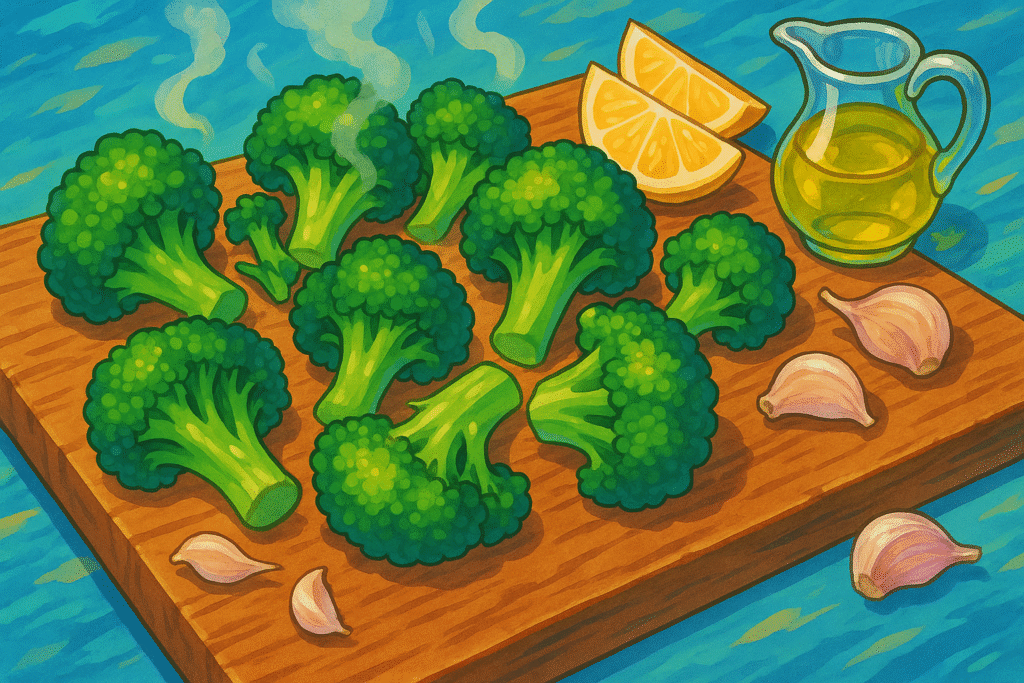Broccoli (Brassica oleracea var. italica)

About Broccoli
Broccoli is one of the most recognized and versatile vegetables on the planet. Its green florets and crunchy stalks absorb flavor while offering a satisfying bite — steamed, roasted, stir-fried, or raw.
Despite its everyday reputation, broccoli is a culinary powerhouse — rich in nutrients, flexible in texture, and comfortable in cuisines from Italy to China.
The History of Broccoli
Broccoli was developed from wild Mediterranean cabbage by ancient Romans, who valued it for its flowering head and dense nutrient profile. It remained a staple in Italian cooking for centuries, particularly in the south.
It reached wider popularity in the U.S. and Northern Europe in the 20th century, promoted as a super-vegetable thanks to its vitamin content and versatility. Italian immigrants helped bring it to North American kitchens, where it gained steam in the postwar era.
The Science of Broccoli
Broccoli contains sulforaphane, a sulfur compound known for antioxidant and anti-cancer properties. Like other brassicas, it’s rich in glucosinolates, which give it a subtle bitterness, especially when overcooked.
It’s packed with vitamin C, K, folate, and fiber, especially in the stalks, which are often underused. Gentle steaming preserves the most nutrients, while roasting adds depth and sweetness.
The Geography of Broccoli
Broccoli grows best in cool climates with rich soil and consistent watering. It’s a major crop in Italy, Spain, the U.S. (especially California), China, and Mexico.
In China, it’s often stir-fried with garlic or soy; in Europe and North America, it’s steamed or roasted with lemon, cheese, or butter-based sauces.
Varieties of Broccoli
Calabrese
The most common supermarket variety. Compact heads, tight florets, and classic mild flavor.
Sprouting Broccoli
Produces multiple smaller florets instead of one large head. Popular in the UK for its sweet, nutty taste.
Purple Sprouting
A cold-hardy variety with purple stems and florets. Sweeter and more tender than green broccoli.
Romanesco (closely related)
Fibonacci-spiraled, lime-green florets. Technically a cauliflower-broccoli hybrid with nutty flavor.
Broccolini
A hybrid of broccoli and Chinese kale. Long stems, small florets, and a milder, sweeter taste.
FAQs All your questions about Broccoli: answered
Can you eat broccoli stalks?
Yes — peel the outer layer and slice the tender interior. It’s sweet, crunchy, and great in stir-fries or slaws.
Why does broccoli smell when cooked?
Overcooking releases sulfur compounds, especially from the glucosinolates. Light steaming helps avoid that.
Is raw broccoli healthy?
Very. It retains maximum nutrients, including vitamin C and sulforaphane — though it’s tougher to digest raw for some people.
What’s the best way to cook broccoli?
Light steaming or roasting preserves nutrients and enhances flavor. Avoid boiling unless it’s brief.